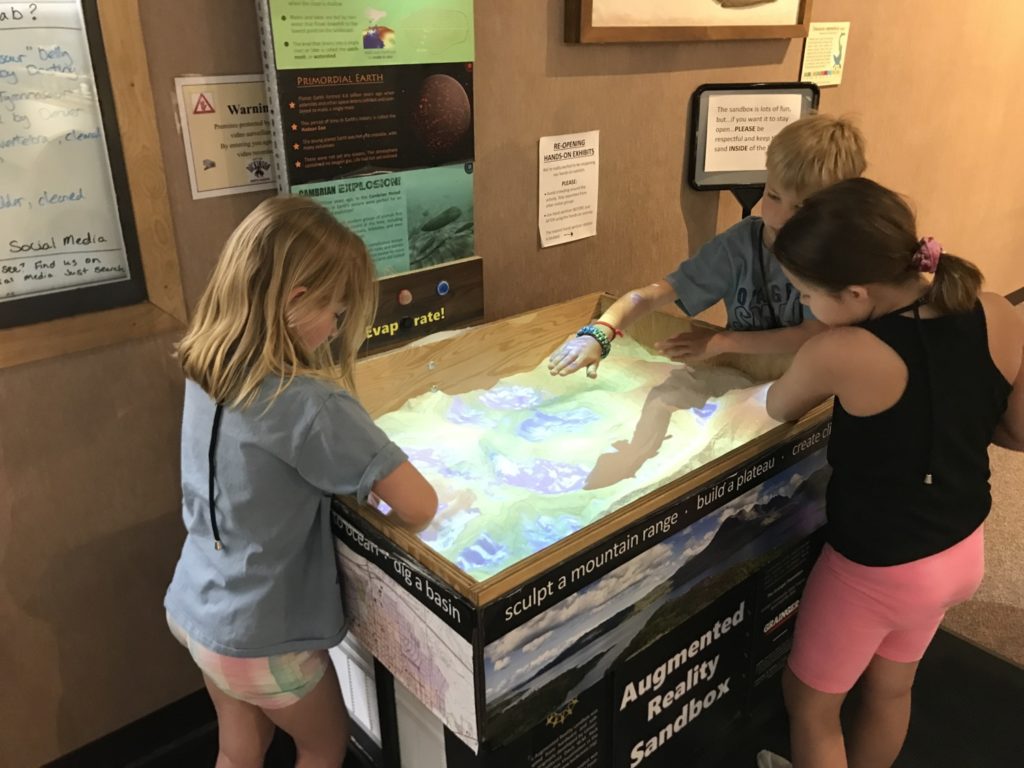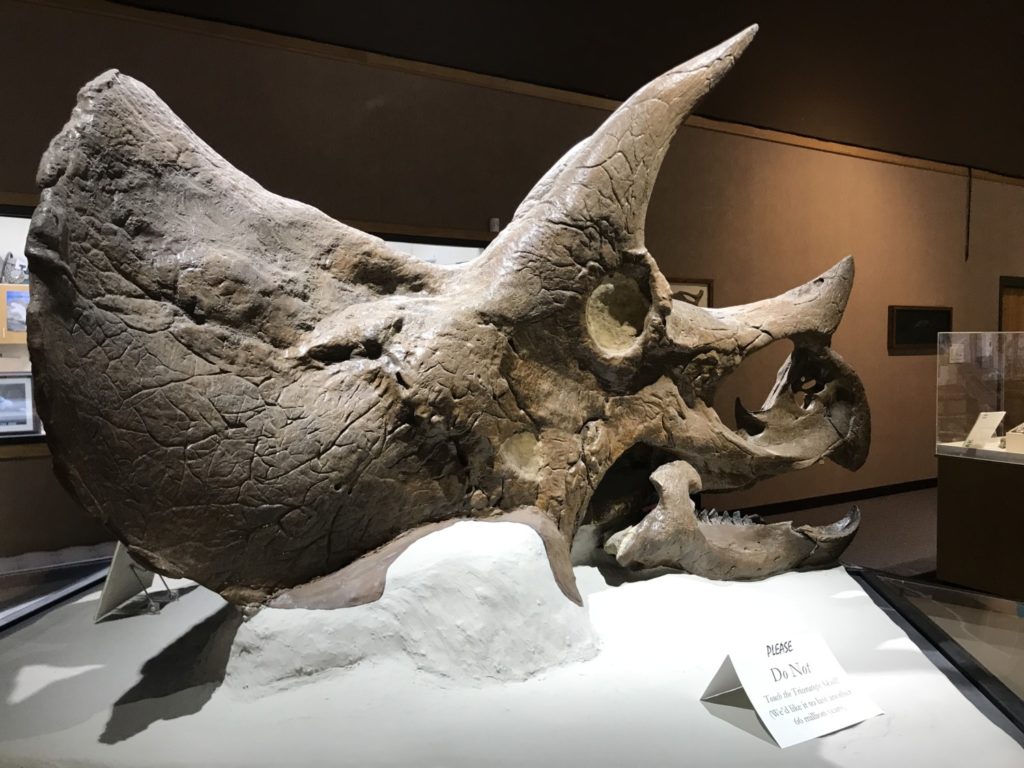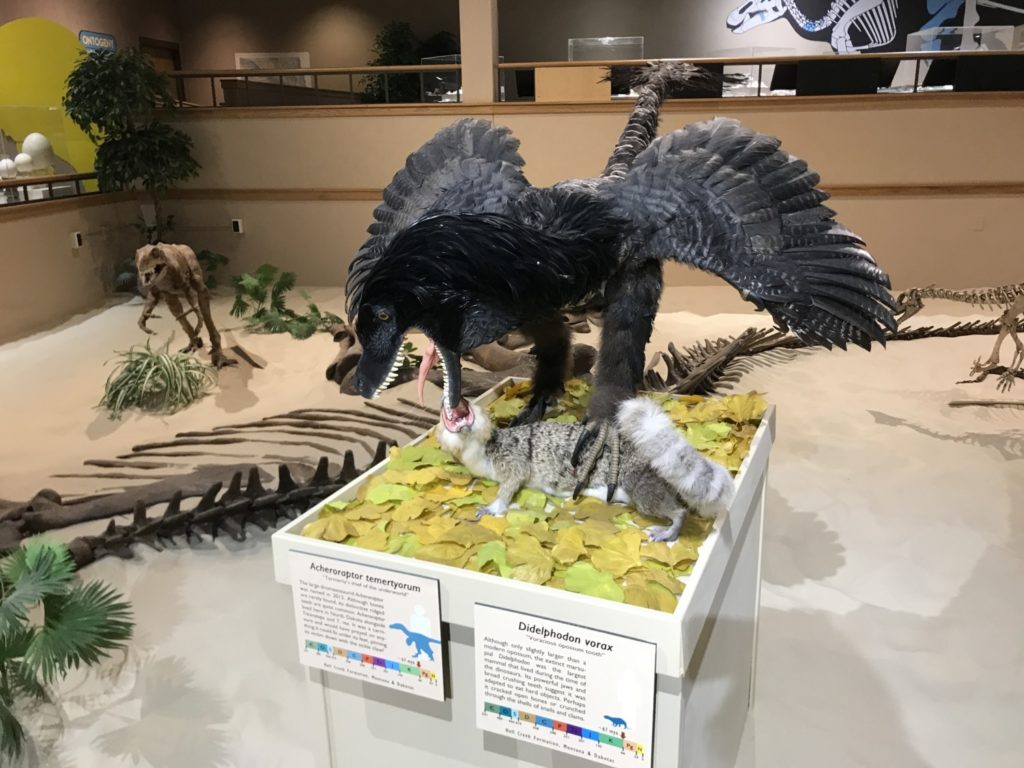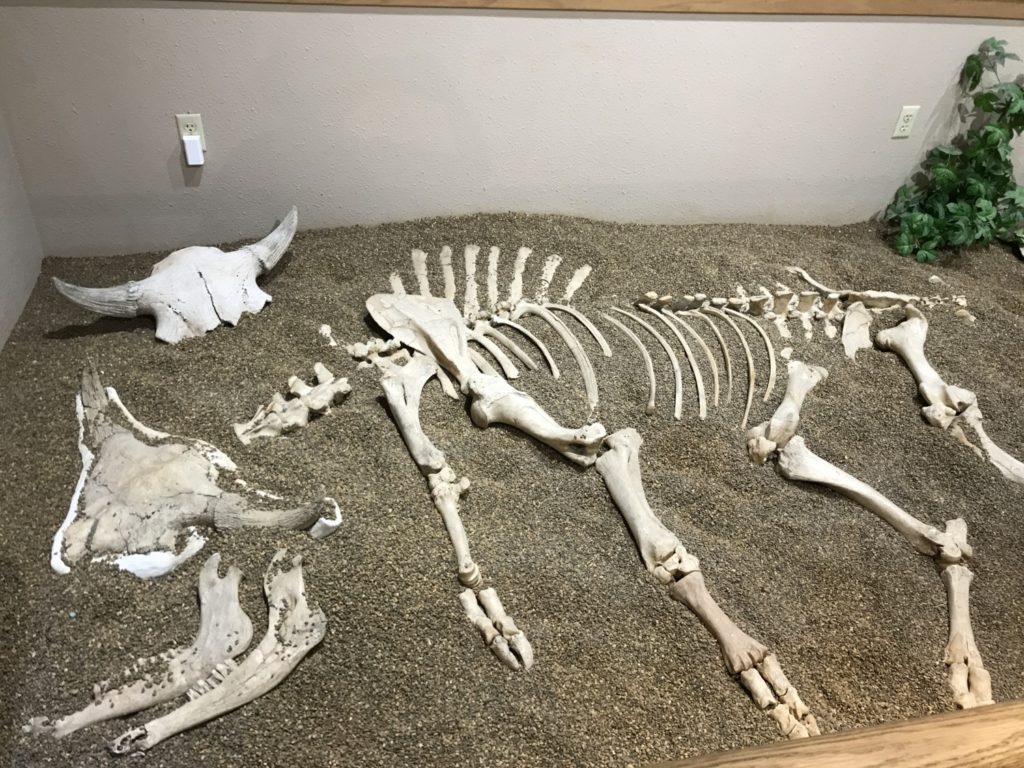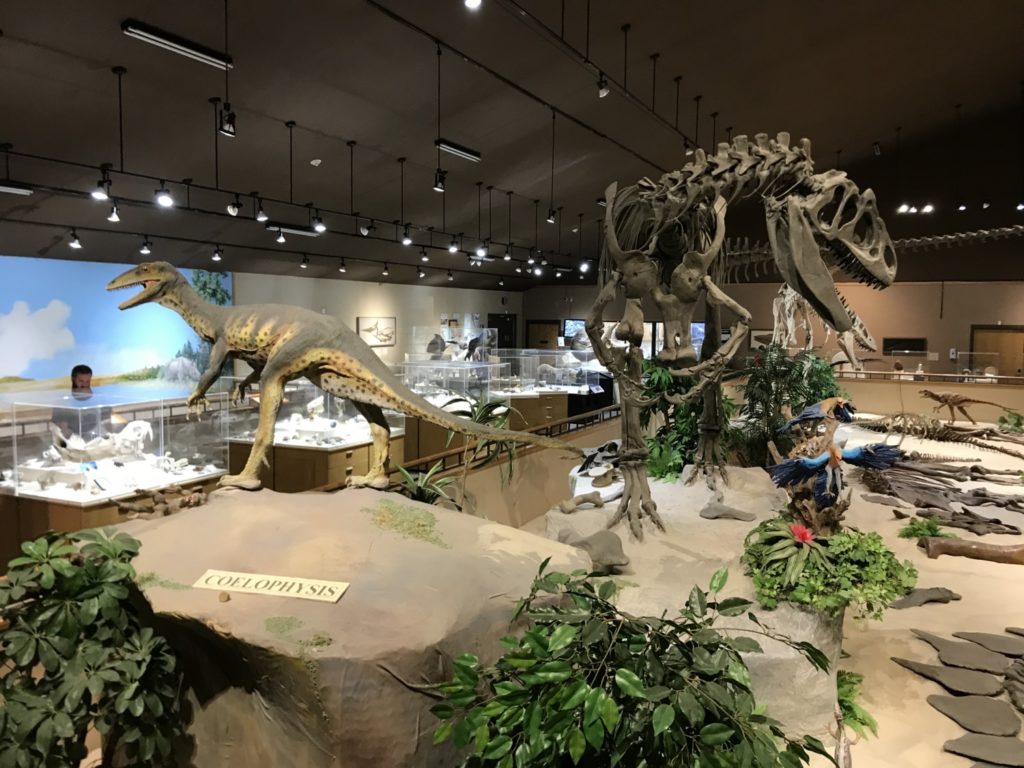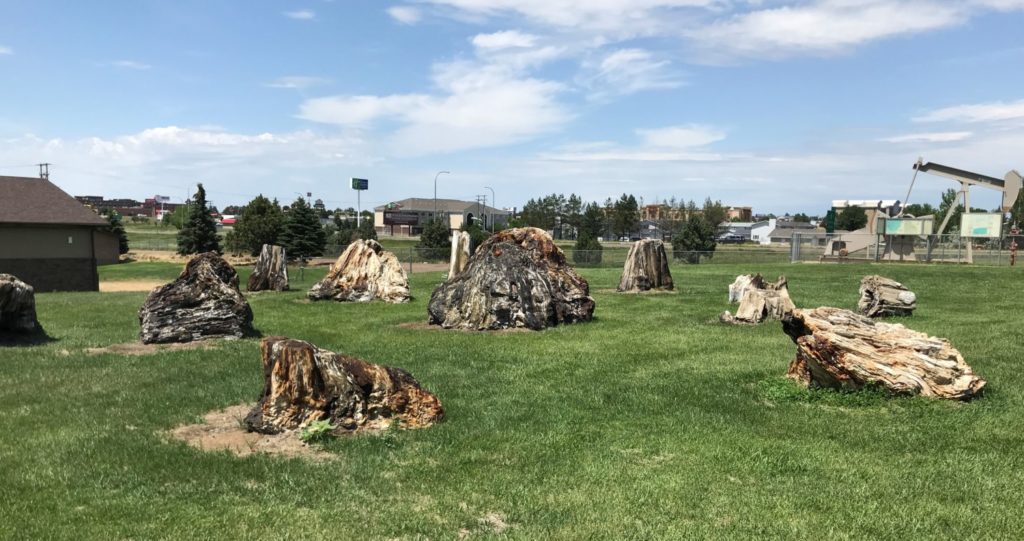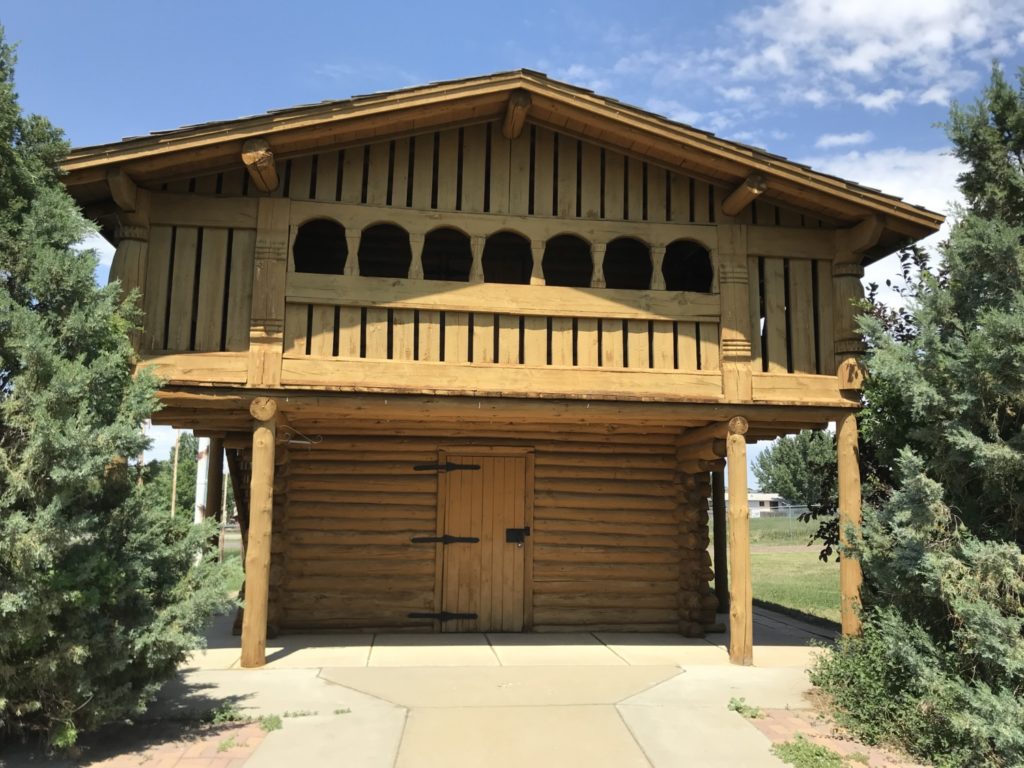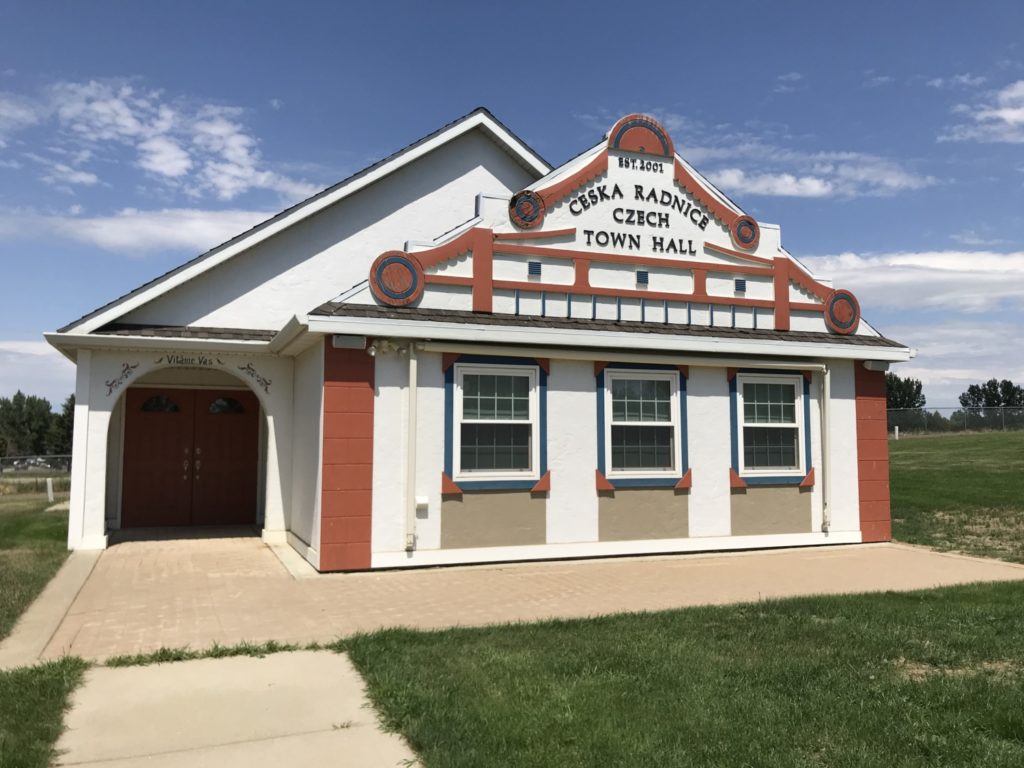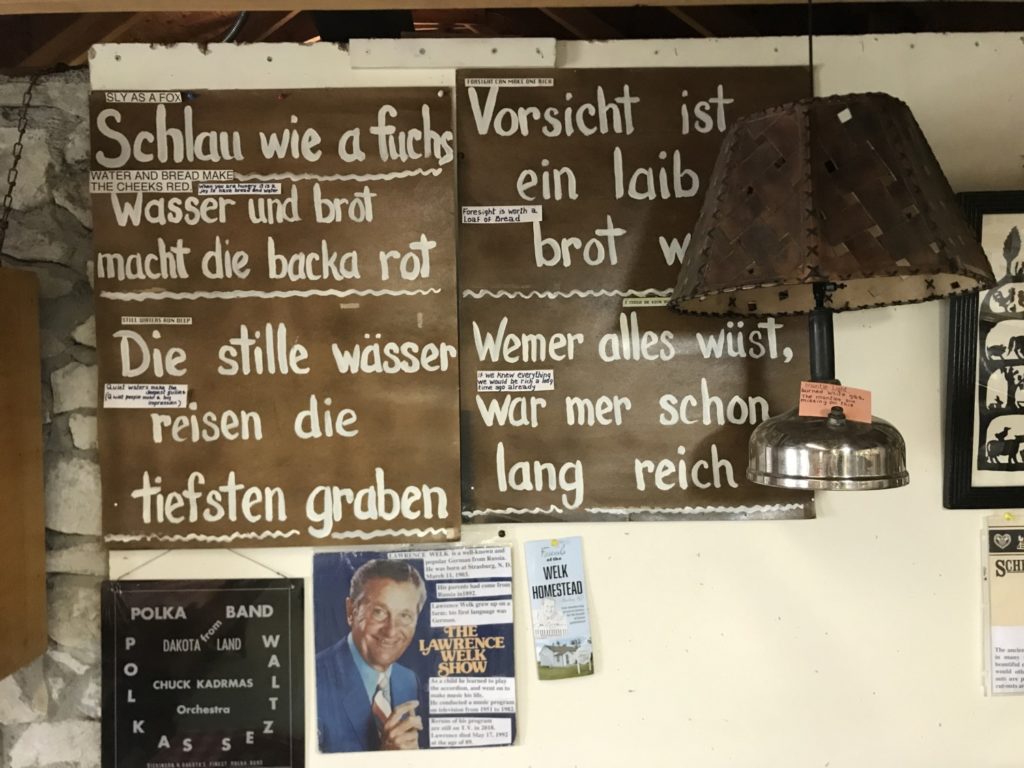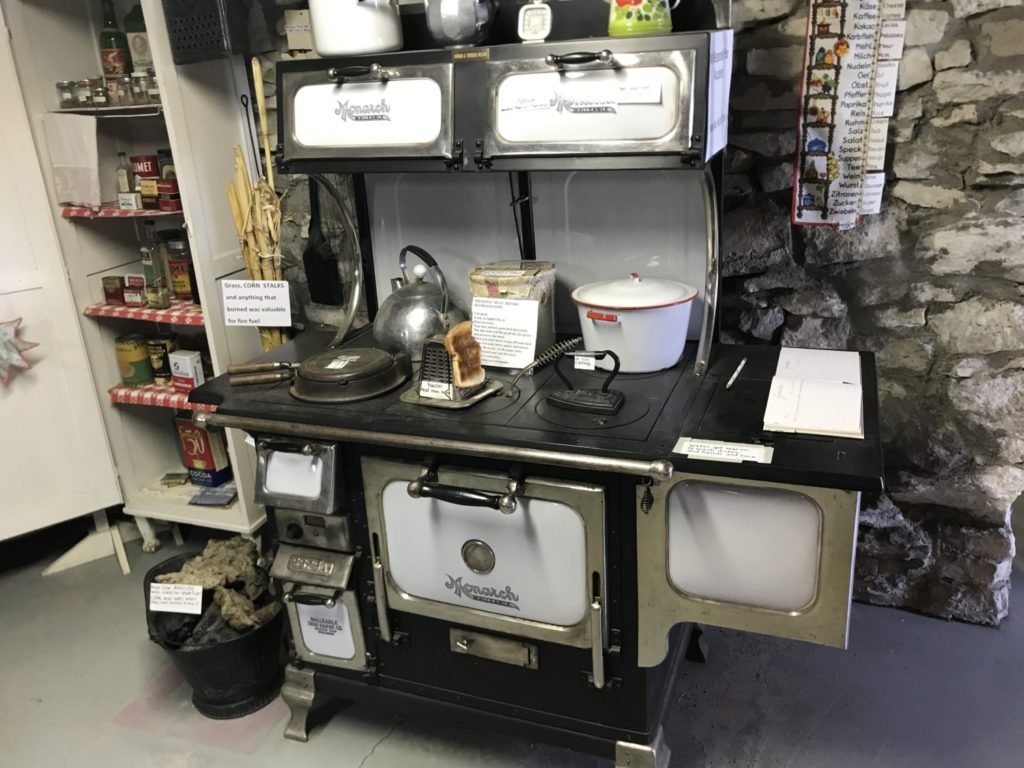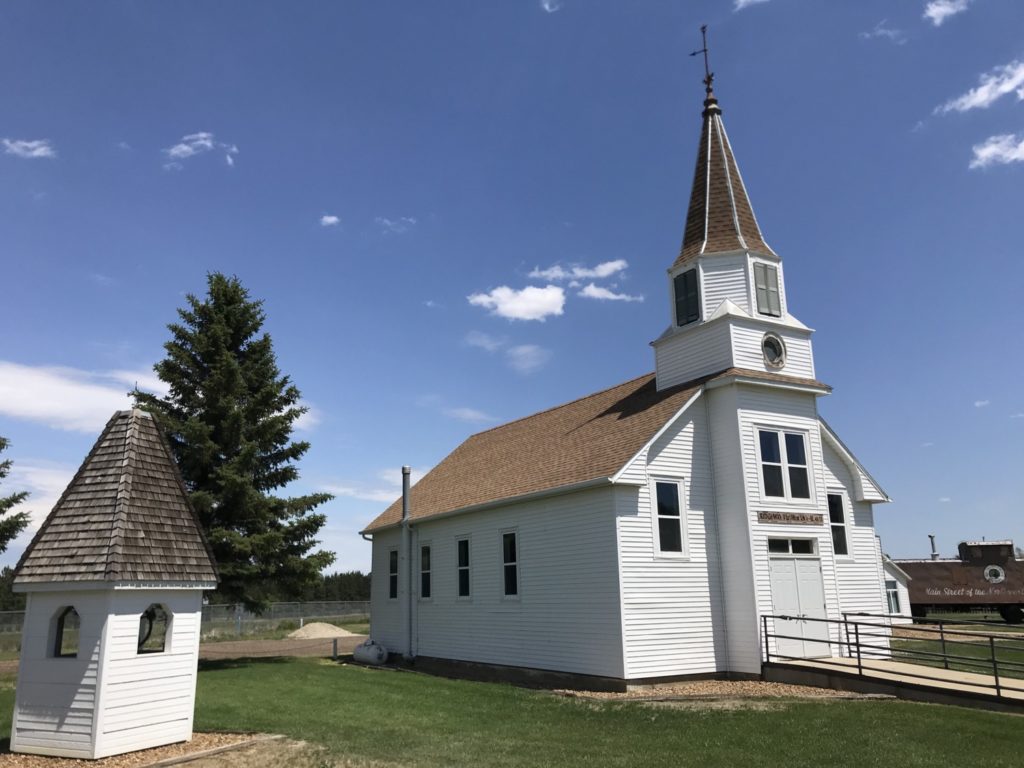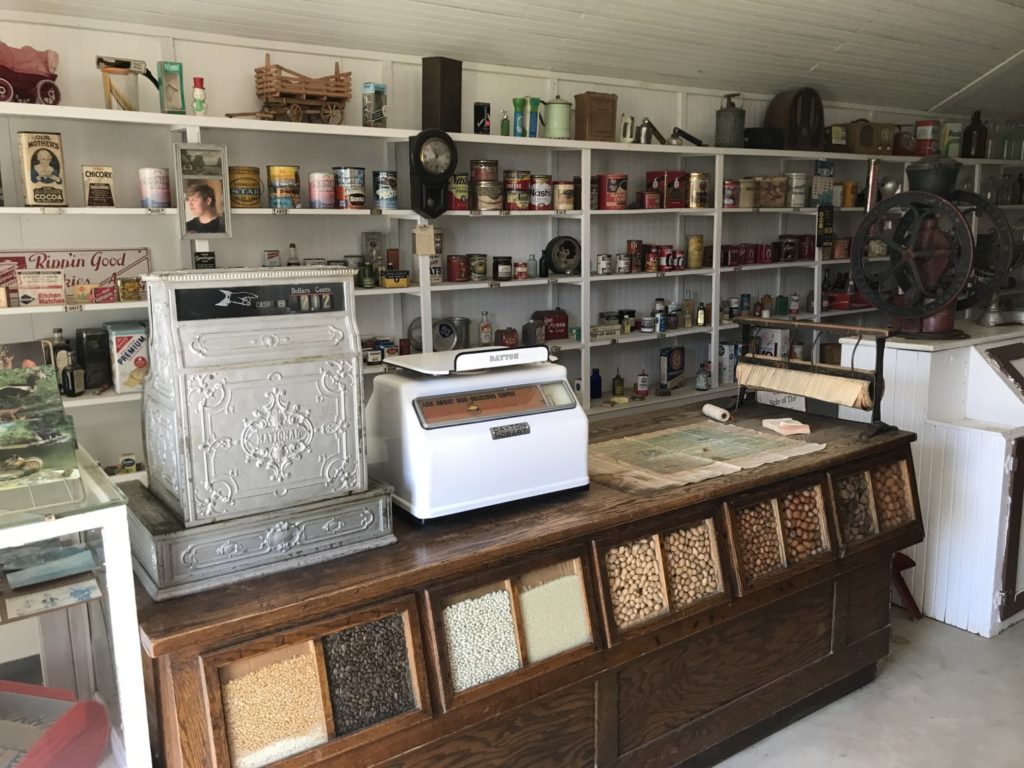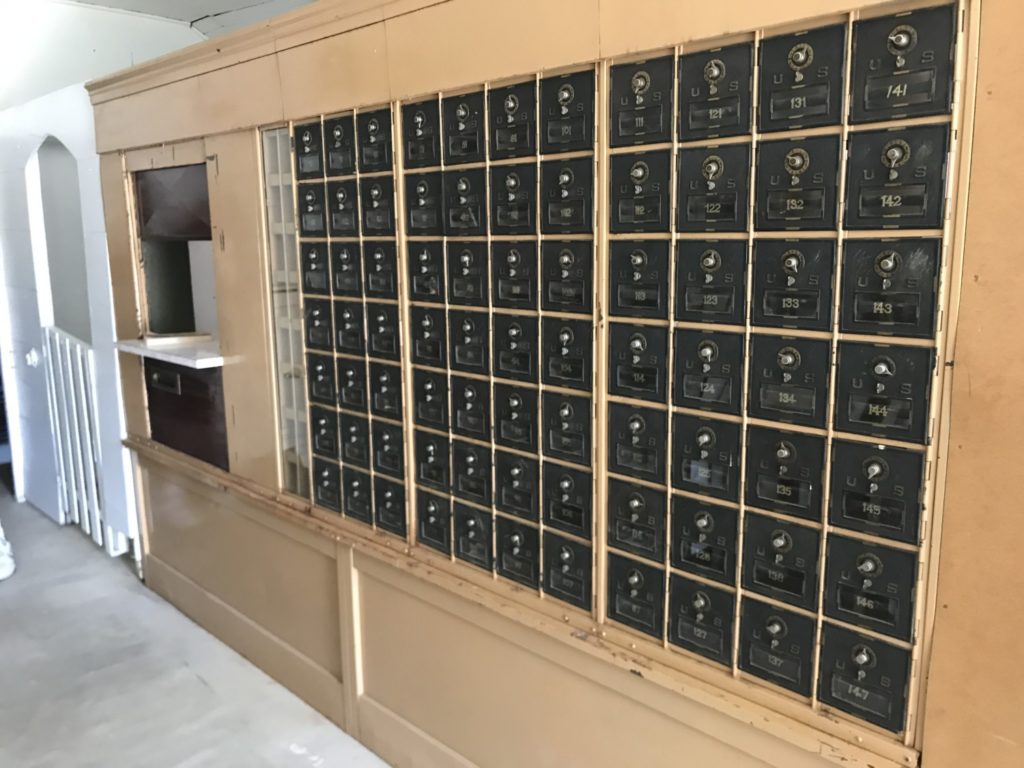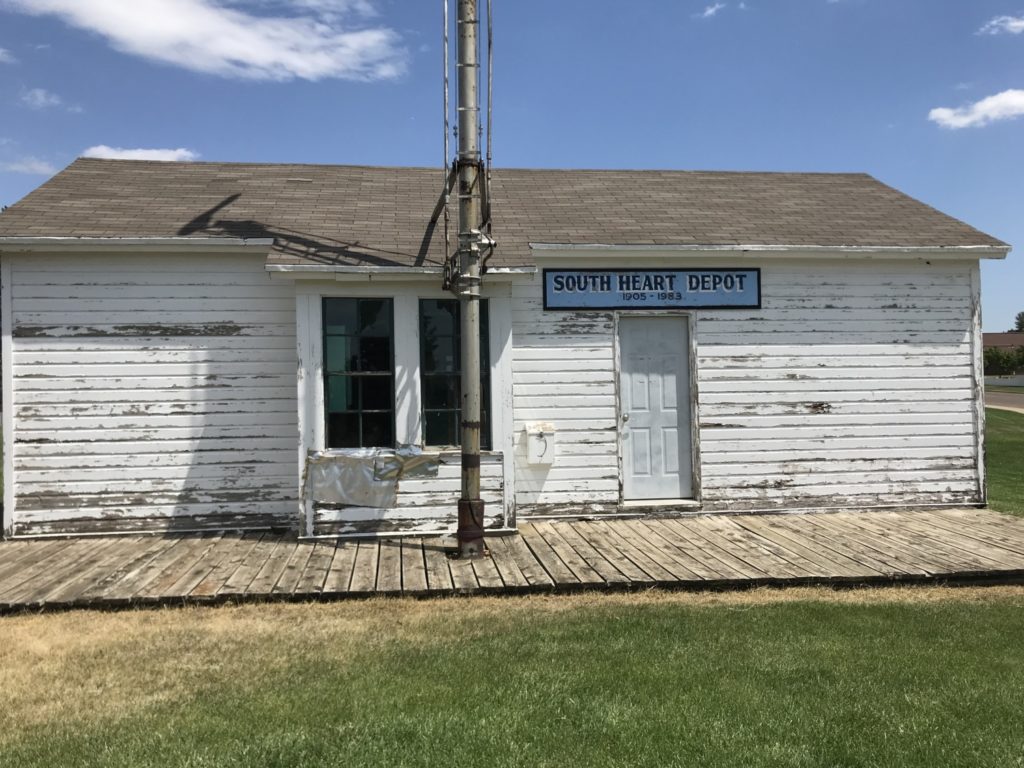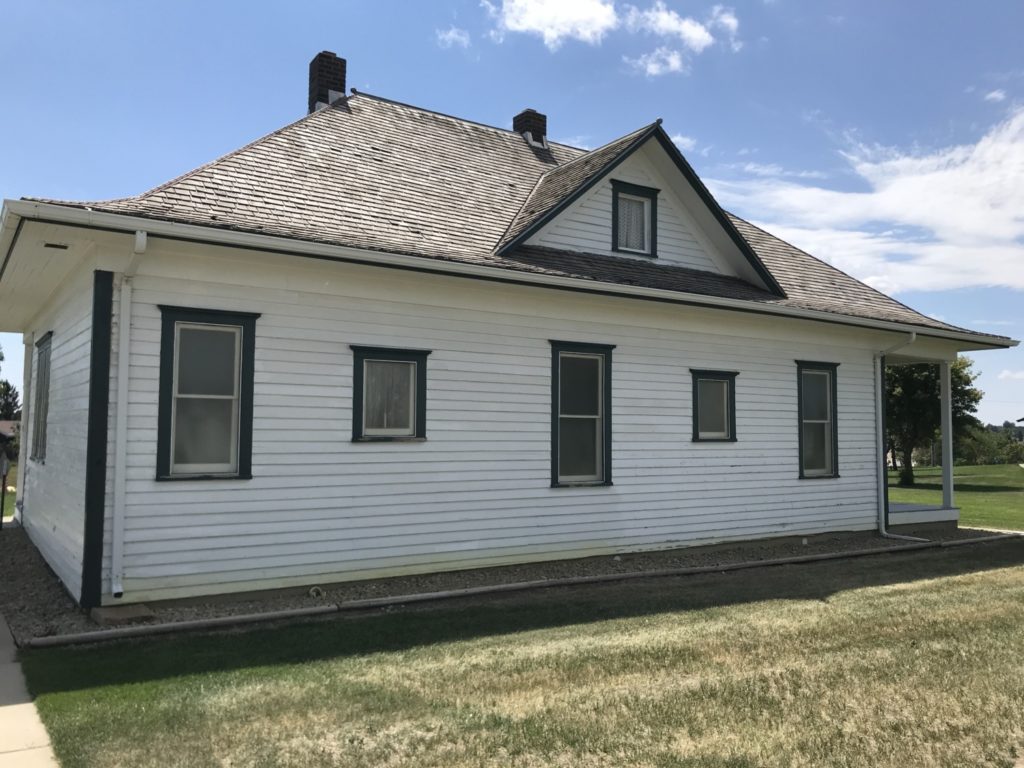When Tom and I had to take the Prius in for a new battery, we made sure we had time to check out the Dickinson Museum Center. Consistently listed #1 among things to do in Dickinson, the Museum Center is a complex of four distinctive museums. There is a dinosaur museum, a regional history museum, a farm tools museum, and a collection of historic buildings.
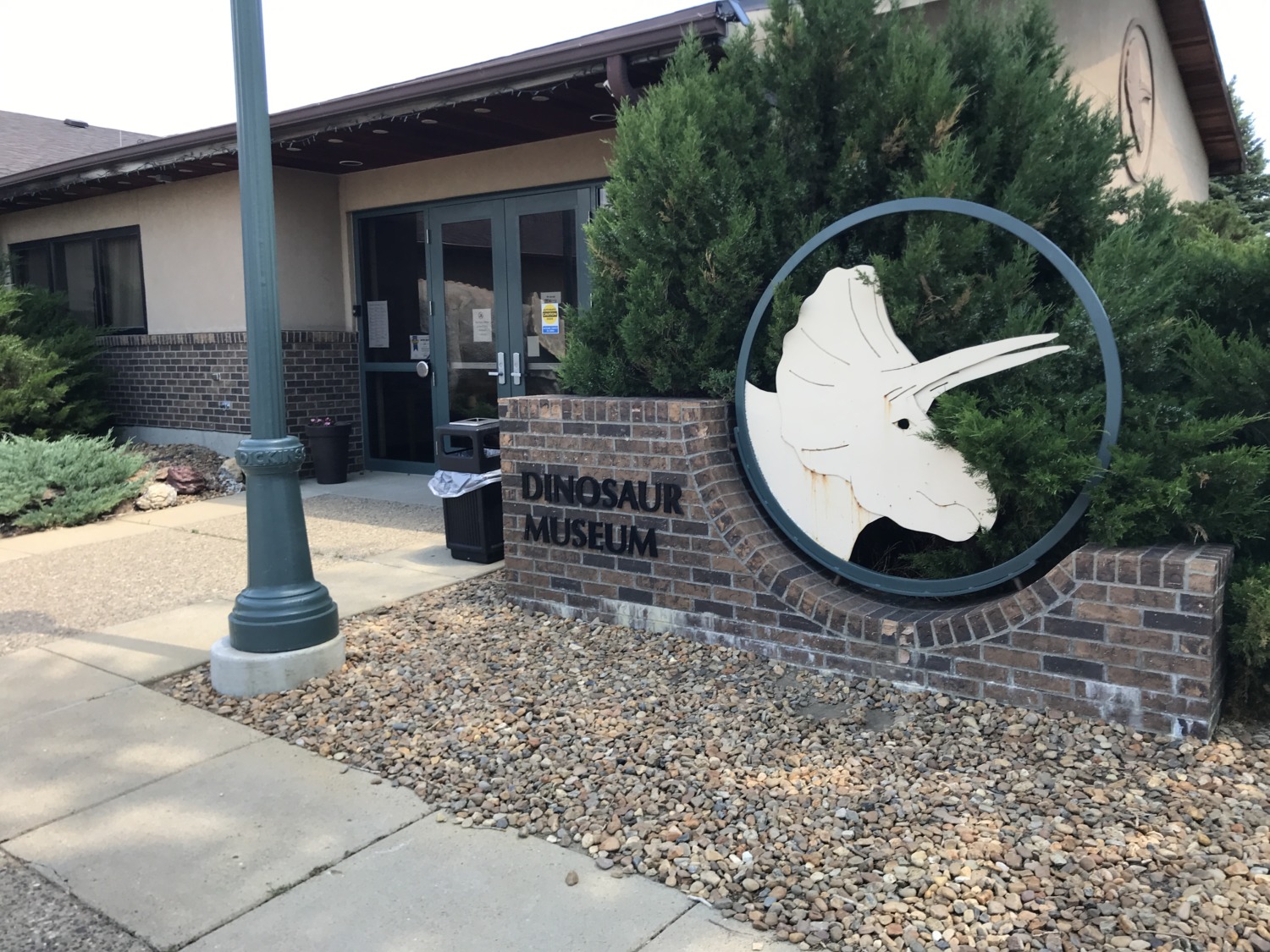
The Museum Center is located on Museum Drive just off I-94, which makes it very easy to find. Admission was $6 each. When you divide that among the different museums, that is only $1.50 per museum, so it is quite a bargain.
After we paid our admission we started in the Badlands Dinosaur Museum. This is the largest dinosaur museum in North Dakota and it was very well done. At first glance, the large hall looked more like a jewelry store than a museum. But once we started exploring, we understood the setup. There were bones and reconstructions of dinosaurs around one side of the hall. In the center of the hall was a life-sized diorama with dinosaurs striding along and their fossils at their bases. Along the other side of the hall were cases set up with bones, gems, and stone found in the area.
My favorite part of the exhibit was the interactive sand box. The sand box projected water and contour lines on a waist-high sand box. Kids could move the sand to create rivers, lakes, and mountains. Tom and I were fascinated.

The next part of the Museum Center was the Joachim Regional Museum with local historic items. The museum was arranged by decades, which doesn’t take as long in North Dakota as it would in an East Coast city. There was a section on the indigenous people and how they lived before Euro-Americans started coming in. But Dickinson didn’t become a town until 1881, about the time the railroads came through North Dakota. The museum started in the 1880’s and dedicated a small section to each decade through the oil boom of 2010. This was an interesting way to set up the museum and gave us the satisfaction of a timeline while displaying some cool stuff the museum collected.

To visit the third section of the Museum Center, the Prairie Outpost Park, Tom and I asked for a tour. The tours are free but dependent on if they have enough staff available. We were the only ones on our tour, although we would have been happy to wait for some others to join us. You can see the exterior of the buildings anytime, but you can only go in if you are on a tour.
We walked around the grounds and enjoyed the stories about the different buildings represented. They have collected these historic buildings from all over the area. We saw the Scandinavian Stabbur – a storage barn – built in 1993 but similar to those build by Scandinavian immigrants to the area. The descendants of Czech immigrants built a Czech Town Hall in 2001.
Descendants of Germans from Russia built a stone house replica in 1980. The Germans were invited to go to Russia in the 1700’s where they had close-knit communities that maintained the German language and traditions. With the Russian Revolution of 1917, entire towns of Germans from Russia immigrated to the United States and Canada, particularly settling in the Dakotas and Saskatewan. Lawrence Welk was the most famous of the Germans from Russia. Even though he was born in the United States, he spoke German exclusively while he was growing up and always spoke English with an accent.
We toured the Shipley School, a one-room schoolhouse built in 1929 and used until 1978. It was moved to the Prairie Outpost Park in 1980. The Ridgeway Lutheran Church was built in 1914 and moved to the park in 1980. We saw the Nord Dakota Herald office which was built in 1999 on the site to house donated equipment from the German language newspaper. The Gorham Store and Post Office was located in the town of Gorham from 1918 until it was relocated in the park in 1984. The South Heart Depot and Caboose were moved to the park in 1984.
The final building in the park is the Heath-Steinmetz Farm House which was moved to the park in 1993. All of the buildings were interesting and furnished in the a historically accurate style. The Czech Town Hall is currently used for meetings of the Germans from Russia Society, the Czech Heritage Society, and the Scandinavian Heritage Organization.
Tom and I skipped the final museum of the Museum Center. The Fam Tools Museum was only open if we asked to see it and we felt we already took enough staff time. Plus, what tools could they possibly have that we couldn’t see in my Uncle Paul’s museum in Wooster, Ohio?
I enjoyed all the parts of the Museum Center. The dinosaur museum was especially well done but I also liked the organization of the regional museum. Seeing the buildings was interesting. I was particularly impressed by the pride that the ethnic groups continue to take in keeping their heritage alive. If you are ever traveling through North Dakota, add the Dickinson Museum Center to your list of places to see.

